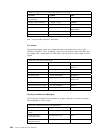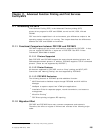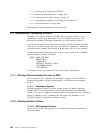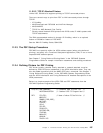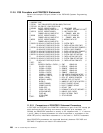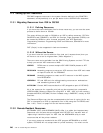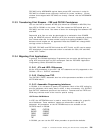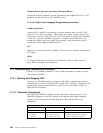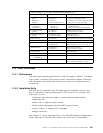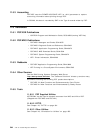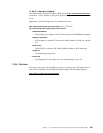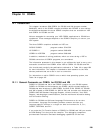
OS/390 Dynamic Allocation and Output Descriptor Macros
Traditional SYSOUT attributes can be specified on the DYNALLOC macro. AFP
attributes can be specified on the OUTDES macro.
11.3.4.4 High Level Language Programming Interfaces
COBOL Applications
Creating AFP in COBOL is essentially the same between MVS and VSE. VSE
code will run in MVS unchanged. MVS coding will require changes to FDs and
File-Control moving to VSE due to the lack of the ability to specify DCB attributes
in VSE JCL. See the AFPREBLK program in vsereblk on the Web site for an
example of COBOL that runs in both environments. See also above the AFP
Toolkit API, which supports COBOL and PL/I.
PL/I
Subject to the same cautions as COBOL, PL/I can also be used for manipulating
AFP output.
REXX
In OS/390, REXX does not have the I/O limitations it does in VSE. There are
many REXX examples on the Web site.
11.4 Understanding Operational Differences
Similar to the POWER commands in VSE, JES2 commands are used to control
PSF printing in OS/390.
11.4.1 Starting and Stopping PSF
There are no PSF/MVS-specific commands. PSF/MVS is automatically started
and stopped as a result of JES2 $S PRT and $P PRT commands. Changes to the
printer setup attributes and selection criteria are also controlled through the
JES2 $TPTR commands.
11.4.2 Command Comparison
Note that VSE/POWER command objects (“devname”) are the names on the
PRINTDEV statement in the PSF startup JOB, whereas MVS/JES2 command
objects (“nnnn”) are printer numbers defined to JES2 via the PRT(nnnn)
statements.
Table 31 (Page 1 of 2). VSE - OS/390 Command Comparison
VSE or POWER Command JES2 Command Comment
POWER Command
PSTART devname
[,classes]
[,PARM=..]
$S PRTnnnn
$T PRTnnnn,CL=q
$T PRTnnnn,R=dest
Start the printer
- Change SYSOUT Class selected
- Change destinations selected
242 VSE to OS/390 Migration Workbook



